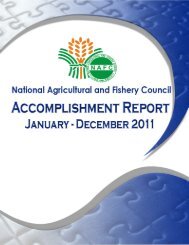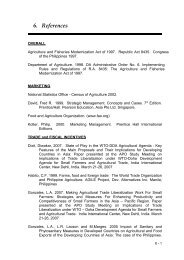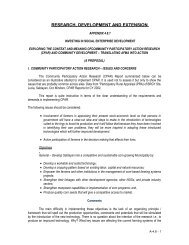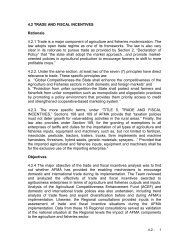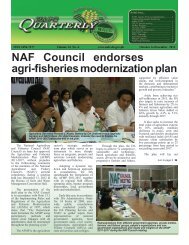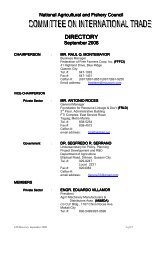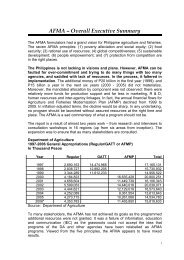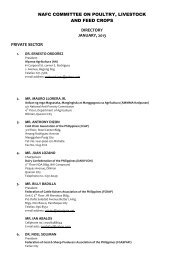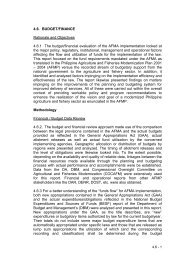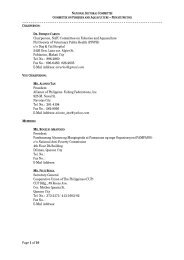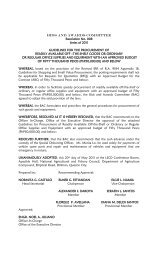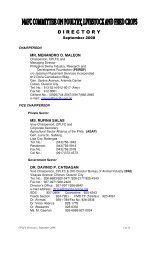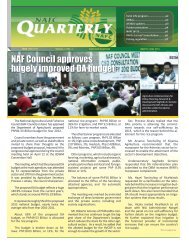5. Key Commodity Performance - National Agricultural and Fishery ...
5. Key Commodity Performance - National Agricultural and Fishery ...
5. Key Commodity Performance - National Agricultural and Fishery ...
Create successful ePaper yourself
Turn your PDF publications into a flip-book with our unique Google optimized e-Paper software.
<strong>5.</strong>7 ONION<br />
Production, Area <strong>and</strong> Yield<br />
<strong>5.</strong>7.1 There are basically three varieties of onions grown: the red onion (Red<br />
Creole), the white onion (Yellow Granex) <strong>and</strong> the multiplier onion, otherwise<br />
known as shallot (a native variety commonly referred to as “Sibuyas Tagalog”).<br />
Production is highly seasonal, with peak in March - April <strong>and</strong> lean period during<br />
June - December. In fact, most of the supplies in the second half of the year<br />
come from cold storage.<br />
<strong>5.</strong>7.2 Production increased by 9.1% per annum from 61,464 tons in 1993 to<br />
85,383 tons in 1997. It benefited from the robust growth in area harvested by<br />
16.2% per year from 6,519 hectares to 11,888 hectares during the period. Output<br />
further rose by 1.9% to 6,978 tons in 1998 as area likewise grew by 7.5% to<br />
12,779 hectares. Despite this increase, however, there was a shortage of onions<br />
in the local market during the year, prompting a substantial rise in imports.<br />
<strong>5.</strong>7.3 In 1999, both production <strong>and</strong> area harvested posted declines. Output<br />
suffered from the flashfloods especially in Nueva Ecija, the major production<br />
area. The surge in imports during the year also discouraged many farmers from<br />
planting onions, thus, contributing to the production decline through 2001.<br />
Production peaked in 2002 at 96,358 tons, boosted by a combination of factors:<br />
the use of good quality seeds, lower incidence of pests <strong>and</strong> diseases, additional<br />
production areas <strong>and</strong> favorable weather conditions. The succeeding years, 2003-<br />
2004, were characterized by production slippages brought about by decreases in<br />
area planted due to unfavorable market prices, crop shifting, <strong>and</strong> weather<br />
disturbances (i.e., dry spell especially in Ilocos in 2003, <strong>and</strong> heavy rains in 2004).<br />
On the whole, growth decelerated to 0.7% per annum from 1999-2004 as area<br />
planted posted a flat growth.<br />
Figure <strong>5.</strong>7.1. ONION: Volume of Production <strong>and</strong> Area Planted, 1993-2004<br />
Production ('000 tons)<br />
100<br />
-<br />
80<br />
60<br />
40<br />
20<br />
Source: BAS<br />
Volume Area<br />
93 94 95 96 97 98 99 00 01 02 03 04<br />
14<br />
12<br />
10<br />
8<br />
6<br />
4<br />
2<br />
-<br />
Area harvested ('000 ha)<br />
5- 50



